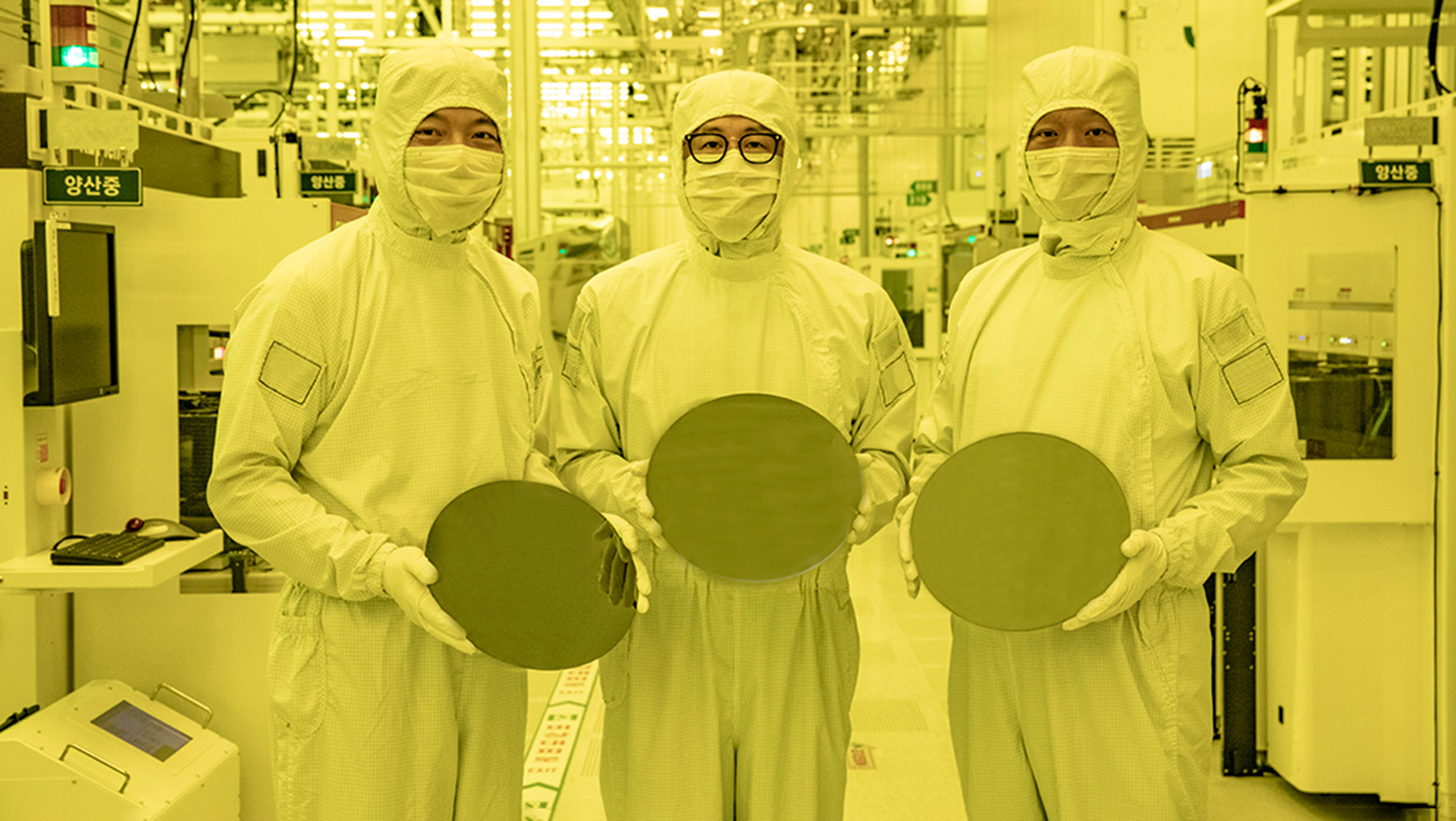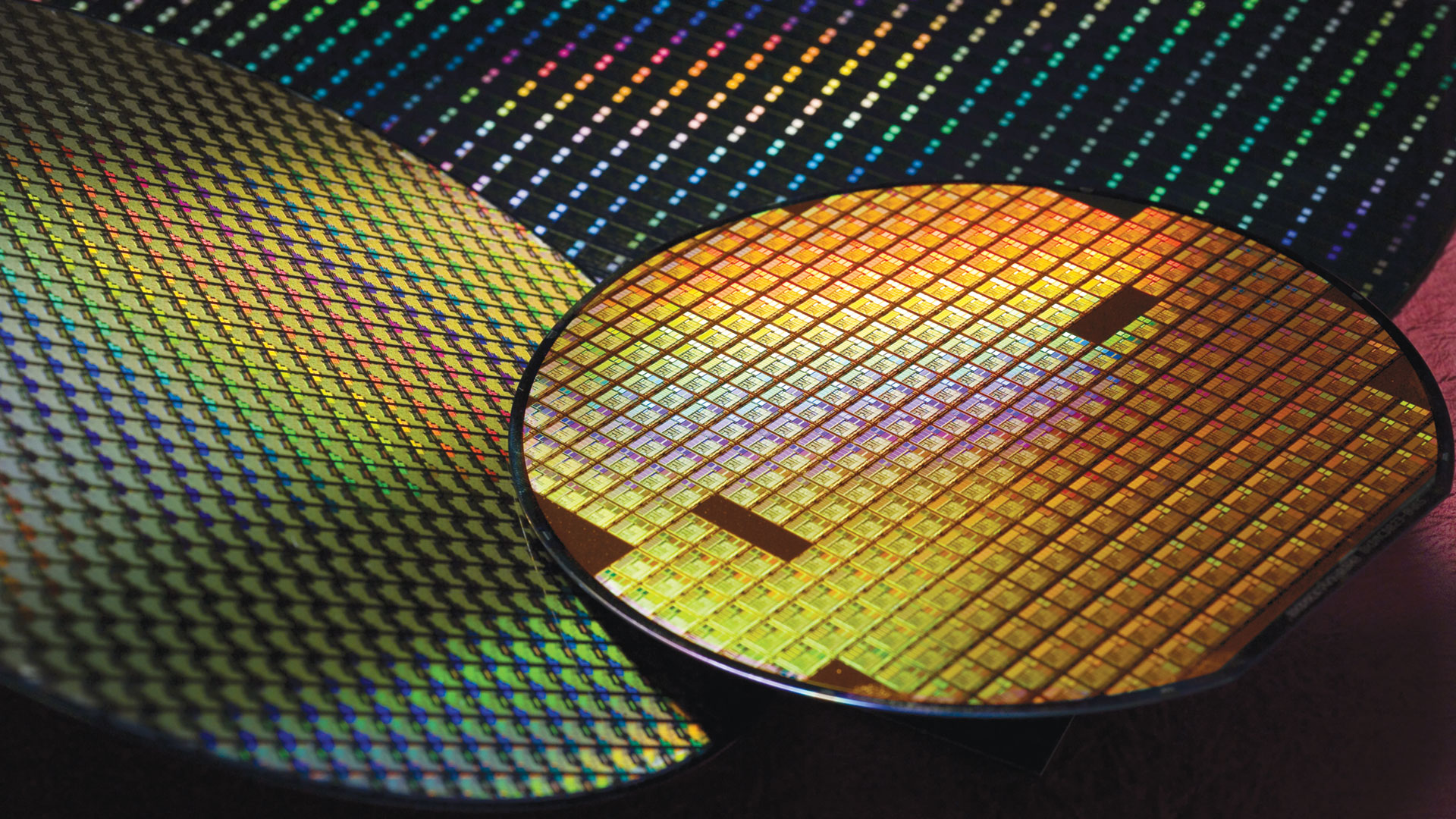Samsung's 3nm process is shaping up very nicely, and that's good news for gamers
More capacity should lead to cheaper chips.

When it comes to advanced semiconductor technology, there's one name that sits above all: TSMC. But there are others seeking to challenge the Taiwanese behemoth. Intel is spending billions in order to claim a larger slice of the chip making pie. GlobalFoundries and UMC are often cited as competitors too. Then there's Samsung, a name everyone knows.
Though it hasn't been able to compete with TSMC at the bleeding edge of semiconductor manufacturing in recent years, Samsung has made no secret of the fact that it wants to challenge and surpass TSMC. Though Samsung and TSMC's 3nm nodes are not equal, the differences don't matter much if yields aren't up to par, and Samsung is reportedly doing well on that front.
According to Korean-based newspaper Kukmin Ilbo (via @harukaze5719) Samsung's 3nm yields are currently around the 60% mark, above the 55% level of TSMC. In contrast, Samsung's 4nm yield is 75%, while TSMC is at 80%. That's expected. As nodes mature, yields increase.
Recall that Nvidia's RTX 30 Ampere GPUs were made with Samsung's 8nm node, whereas RTX 40 cards are made with a tweaked TSMC's 4N node. Samsung would not have been happy to lose a customer like Nvidia. If it's to win back big pocketed customers, it needs to compete with TSMC.

Best CPU for gaming: The top chips from Intel and AMD
Best gaming motherboard: The right boards
Best graphics card: Your perfect pixel-pusher awaits
Best SSD for gaming: Get into the game ahead of the rest
A competitive Samsung is important for gamers and consumers in general. Currently, capacity is limited and manufacturers must compete for access to the most advanced nodes. That means companies with the biggest pockets are able to lock up most of the available capacity. I'm looking at you Apple. Throw a few billion around and see what it gets you.
In turn, the likes of AMD and Nvidia are forced to pay more per wafer or chip, and who bears the burden of those higher prices? You got it: us.
The competition for advanced wafer starts is only going to ramp up. The iPhone 15 is one thing, but then there's the insatiable demand for AI chips. When you have products selling for tens of thousands of dollars each taking priority, those of us looking for an affordable RTX 4080, RX 7900 XT or any other GPU or CPU you care to name are left wanting and forced to pay more.
The biggest gaming news, reviews and hardware deals
Keep up to date with the most important stories and the best deals, as picked by the PC Gamer team.

And that's why it's better for us if Samsung's nodes and yields are competitive. Of course, the cost of wafers or usable chips doesn't directly lead to end products rising or falling in price, but there is correlation. If AMD, Nvidia or Intel really want to gain some gaming market share, they'll have some margin to play with.
On the GPU side, the dream is to have Nvidia RTX 50, AMD RX 8000 and Intel Arc A800 (or whatever they end up being called) all competitive on performance and manufacturing processes. If that happens, maybe we'll see a proper price war, with ever faster and more affordable products for gamers.
The same fundamental points apply to CPU manufacturing too. The move to chiplet or tile architectures is well underway, and a competitive Samsung means TSMC will have to deal with the reality that it no longer has a monopoly on the most advanced chip making capabilities.
Cheap chips for chump change? Well, not quite, but we can dream. It begins with competition for TSMC. Samsung never really went anywhere, but we all need it competing head-to-head with TSMC in the big leagues.

Chris' gaming experiences go back to the mid-nineties when he conned his parents into buying an 'educational PC' that was conveniently overpowered to play Doom and Tie Fighter. He developed a love of extreme overclocking that destroyed his savings despite the cheaper hardware on offer via his job at a PC store. To afford more LN2 he began moonlighting as a reviewer for VR-Zone before jumping the fence to work for MSI Australia. Since then, he's gone back to journalism, enthusiastically reviewing the latest and greatest components for PC & Tech Authority, PC Powerplay and currently Australian Personal Computer magazine and PC Gamer. Chris still puts far too many hours into Borderlands 3, always striving to become a more efficient killer.

